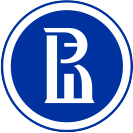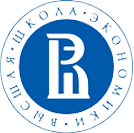The 2023 GCI assesses vulnerability of the public and private sectors to corruption and the scale of white collar crimes (corruption-related crimes associated with finance and economy, i.e. bribery, fraud, abuse of functions, misappropriation of funds, money-laundering and the like) in 196 jurisdictions.
The first sub-index, corruption risk exposure (60% of the total score), incorporates the following elements:
- The ratification status of key anti-corruption conventions (15% of the first sub-index);
- The level of perceived public corruption (25.5%);
- The reported experience of public and private corruption (17%);
- Country characteristics closely related to corruption such as transparency of public bodies and officials, effectiveness of public administration, legal and political environment (42.5%).
The second sub-index, white collar crimes (30% of the total score) is based on the analysis of the AML Index of the Basel Institute on Governance and a set of white collar crime indicators from other sources.
To calculate the 2023 index, 42 indicators based on the open source data (raw data of the United Nations, OECD, World Bank, Transparency International etc.) were used in total.
In order to standardize the data the z-scores normalization method, which converts datasets to a common scale with a mean of zero and a standard deviation of one, is used.
The aggregation process converts all data points to a scale of 0-100, where 0 represents the lowest risk of corruption and white collar crimes, and 100 corresponds to the highest risk of corruption and white collar crimes. Each country’s global score is then calculated following the weights.
In 2023, Finland (score 6.76 out of 100), Norway (8.3), New Zealand (8.38), Sweden (8.44) and Denmark (10.9) are at the top of the ranking.
Its bottom lines are occupied by Syria (score of 86.82 out of 100), North Korea (85.77), the Democratic Republic of Congo (80.49), South Sudan (80), and Yemen (78.89).
Russia was assigned the score of 51.81, thereby dropping by two lines if compared to the 2022 CGI, from 125th to 127th place.
As for the general ranking for the regions, the researchers highlight that Europe holds the leading position (score of 29.7 out of 100), followed by Oceania (40.1) and North America (43.8); the performance of South America (46.1) and Asia (50.1) is close to the global average (45.9), while Africa remains the region with the highest risk of corruption and white collar crime (score of 57.9 out of 100).
The regional leaders are: Canada (17.05) in North America, Uruguay (21.15) in South America, Finland (6.76) in Europe, Cape Verde (34.21) in Africa, Singapore (16.29) in Asia, and New Zealand (8.38) in Oceania.
As per the GCI assessments, some countries that enjoy low corruption risk exposure have at the same time poor performance under the white collar crimes sub-index. In particular, Luxemburg is placed 8th and 60th in the ranking respectively, Liechtenstein is assigned 18th and 94th places, and the UAE 44th and 144th.

